Do you want to know the exact location of someone who visited your website, including seeing them within Google Maps?
If so, we have bad and good news ..
Bad news – you can’t identify the actual person who visited your website.
Good news – you CAN identify the home address or other location (including business location) of where they were located when they went to your website (and what they looked at page by page).
Home address (B2C) example
This is for you if you want to identify the home addresses of website visitors.
The website visitor was at 24 Bayham Road, Bells Yew Green, Tunbridge Wells, TN3 9AF:
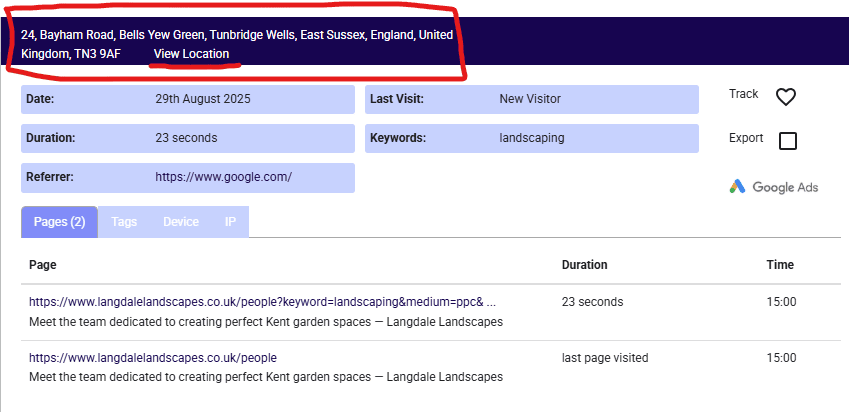
By clicking on ‘View Location’ (when in Google Chrome) you get taken to the Google Maps page of where they are:
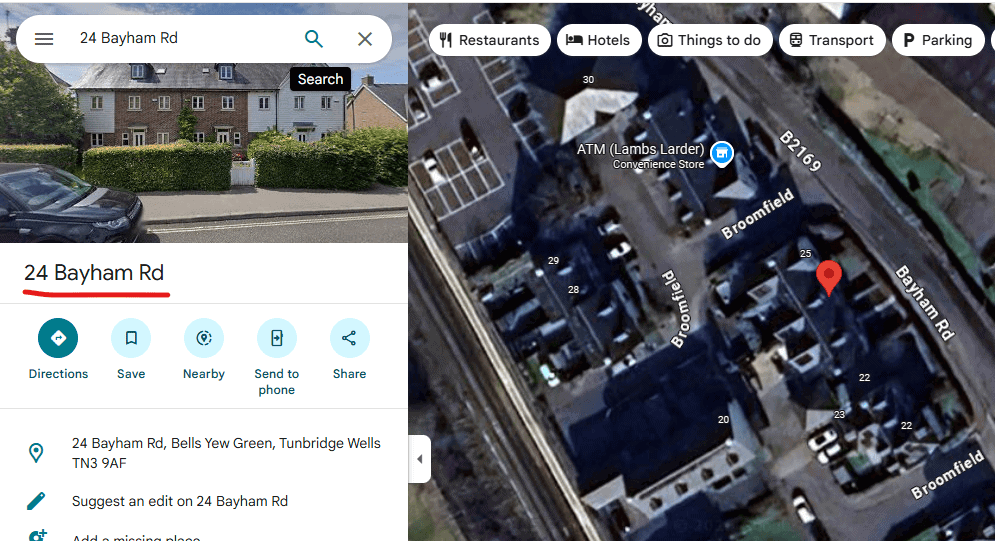
What you do with that information depends on your business, but most people send a good quality brochure, a topic covered in more detail here.
If you weren’t aware it was possible to easily see the home addresses of people and then view them on Google Maps, you can find out more (including a free 30 day trial) on our page here.
Business (B2B) examples
This is for you if you want to identify the business addresses of website visitors via geolocation, which is useful when that business can’t be identified by IP address, including business people who work from home
The website visitor was from A L Builders, 17 Claremont Road, Tunbridge Wells, TN1 1SY:
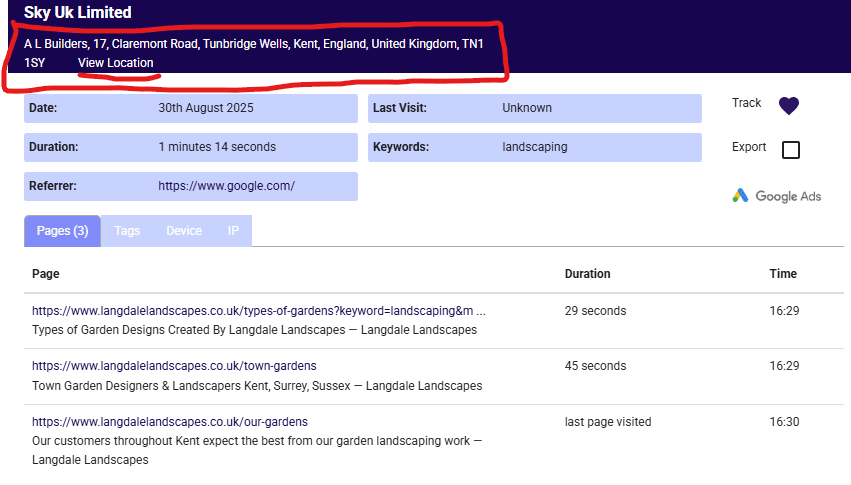
By clicking on ‘View Location’ (when in Google Chrome) you get taken to the Google Maps page showing, in this case, that they are a home-based business:
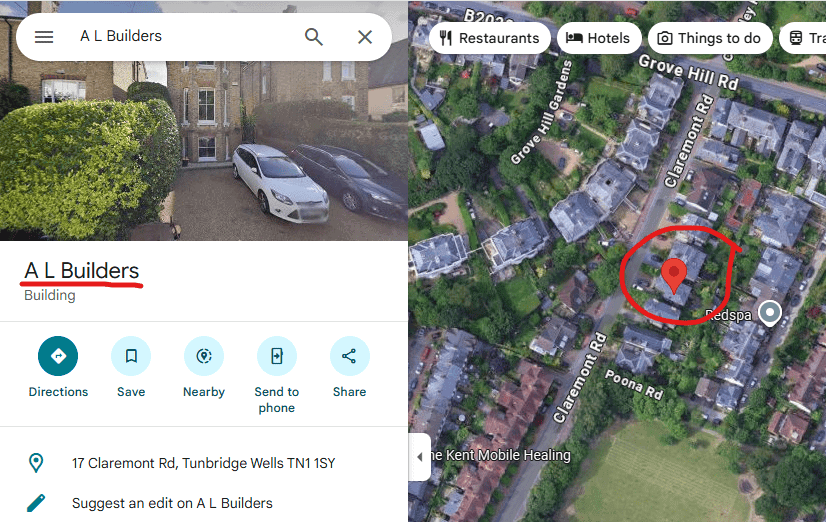
And here’s an example of a small business that couldn’t be identified by IP address, but could be identified by geolocation as being from Unit 10, Prince Consort Industrial Estate, Hebburn, Tyne and Wear, NE31 1EH:
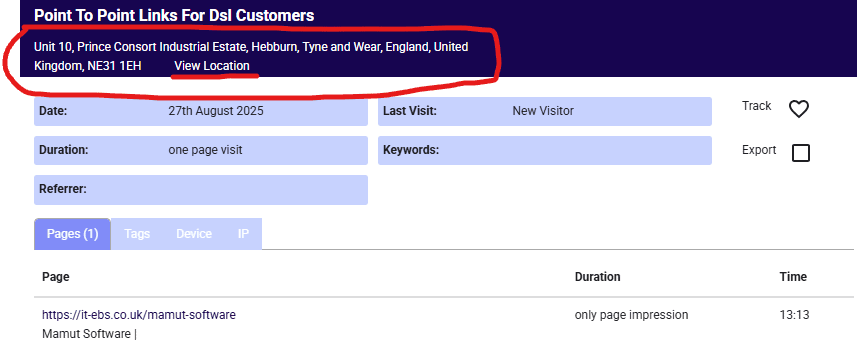
Clicking on ‘View Location’ (within Chrome) shows that although there are various businesses on that industrial estate, there’s only one at Unit 10 – Bill Quay Precision Engineering & Fabrications:
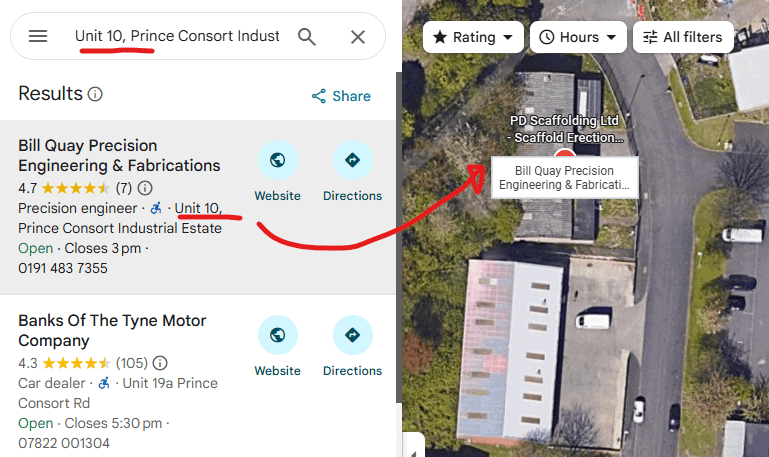
What you do with that information depends on your business, but in the B2B world it can include any of the following:
- Using LinkedIn to identify people to contact.
- Ringing the company who visited the website.
- Sending something in the post to an identifiable person at the company.
- Emailing an identifiable person at the company.
If you weren’t aware it was possible to see the business addresses of people in ways deeper than IP address tracking, you can find out more about that (including how to get a free 30 day trial) on our page here.


